Having clarified that, I would also like to say that I always welcome learning new skills. Also, I would like to believe that I can do anything if I give it my very best shot. So recently, I was obsessed with the idea of making an oversized sweater with an image of Snoopy, a character from the Peanuts comic, originally written by Charles Schulz. No idea why this idea captivated me except for the fact that I have been a Snoopy fan for as far back as I can remember. Nevertheless, truth be told, I live in the tropics and really don't have much use for this type of garment. But, as the saying goes, "a makers gonna make", so that's what I did.
How I made an oversized Snoopy Sweater
When I was completing my master's degree, the mentor of our research group would have us study a published research paper and try to repeat the experimentation to obtain similar results. It was believed that by doing so we would develop sound research skills. So, I decided to apply this same technique to learning how to design a loose-fitting sweater.
I began by choosing a pattern from my archive that made a sweater similar to the outcome I wanted. I made 4-inch by 4-inch swatches in single crochet with different hook sizes until I obtained the designer's gauge. I used Scheepjes Cotton/Acrylic sport weight yarn held double and a 7 mm hook. Then, I referred to the pattern I was using as a base to determine how long to make my bottom ribbing (single crochets in the back loop over 8 stitches) and then I turned 90 degrees to begin the back panel, picking up the number of stitches suggested by the designer. For the back, all I needed to do was to complete rows (back and forth) in single crochet, all the same length, until I reached the desired length of the sweater (This ended up being 106 rows! Read on to find out why.)
The Mind and Muse Crafts Podcast//Episode 2021-17: And so it ends... (12/28/2021)
The Mind and Muse Crafts Podcast// Episode 2022-1 This grateful crafter
For the Snoopy design, I imported a clipart found on the Internet into Stitch Fiddle (an online crochet, knitting and cross stitch pattern maker that can be found at Stitch Fiddle | Free online knitting and cross stitch stitch chart pattern editor )
This software has free and paid-for versions and will help you create the colorwork chart from an imported image. The paid-for version also allows you to create row by row written instructions for your charts and to save your charts. My chart had 44 stitches across and 64 rows, but, my front panel had 64 stitches in total, so I always made 10 half-double crochet stitches before starting a row of the chart and 10 stitches after completing a row of the chart.
Would you ever try to make a crochet sweater without a pattern? I'm thinking that I could give it a second try!
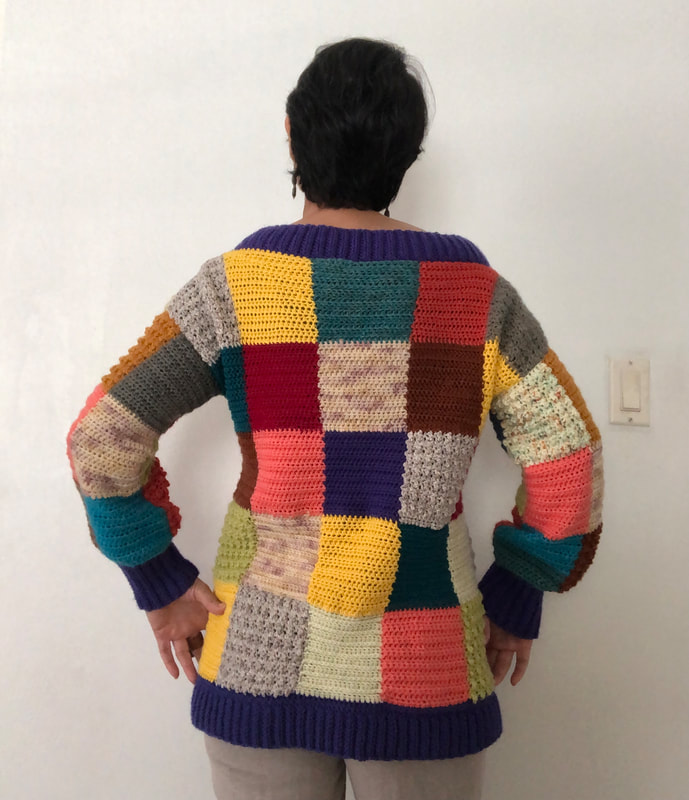
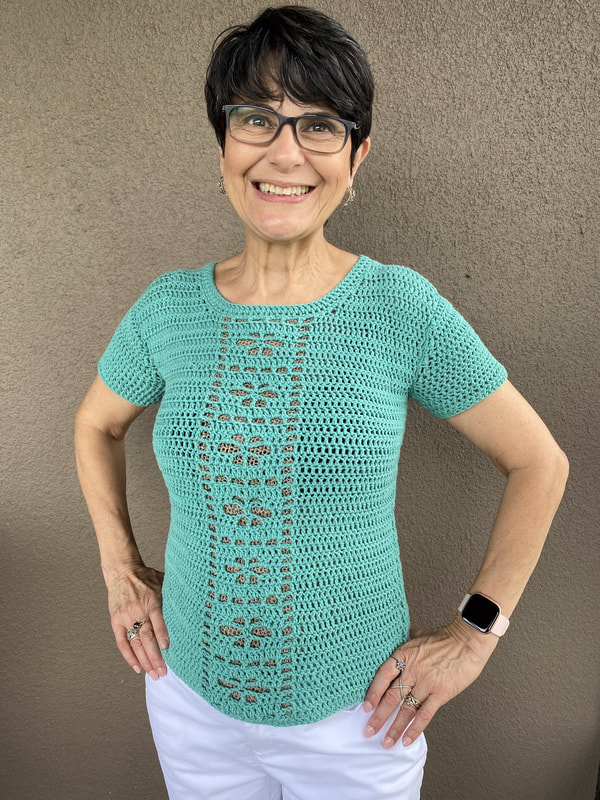
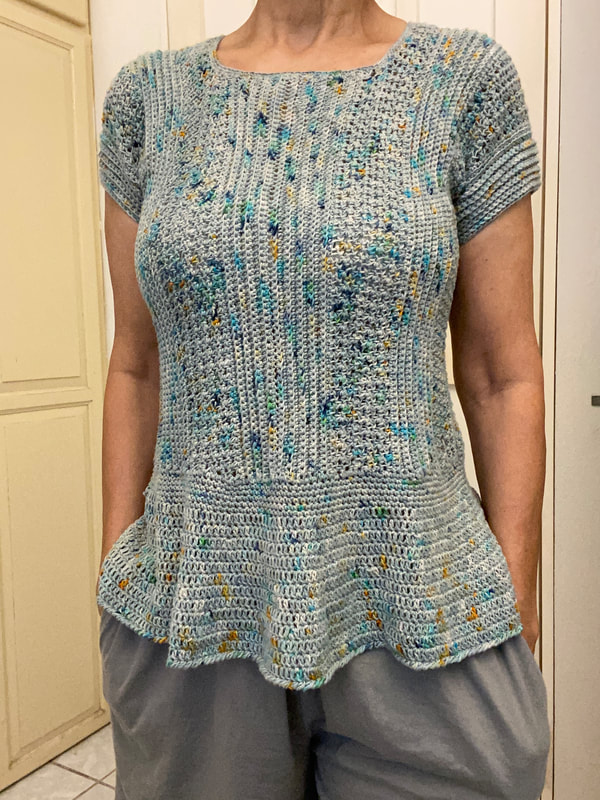
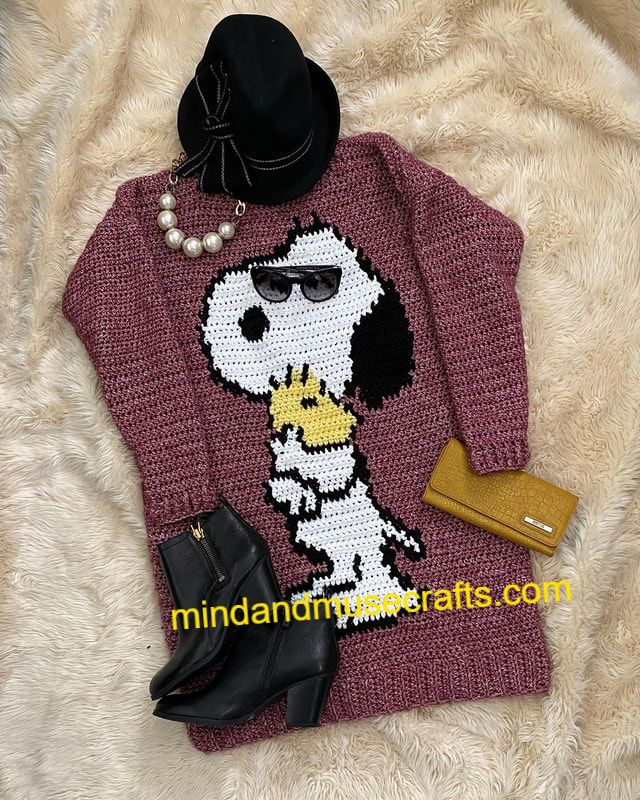
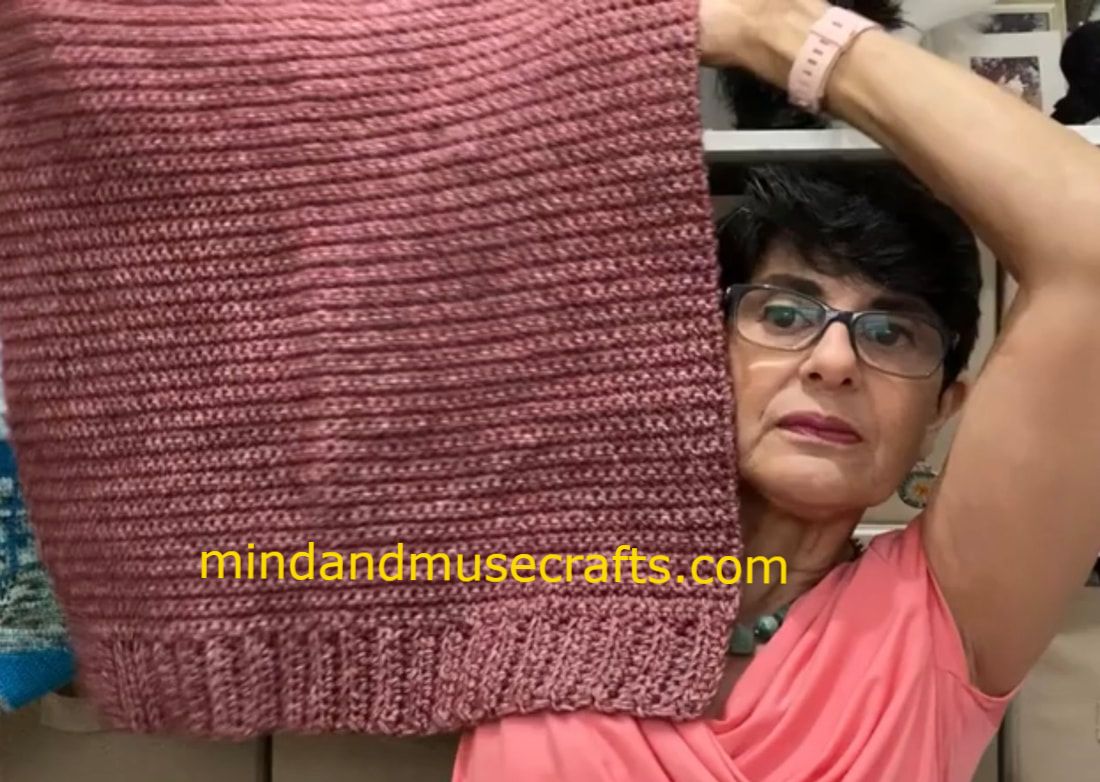
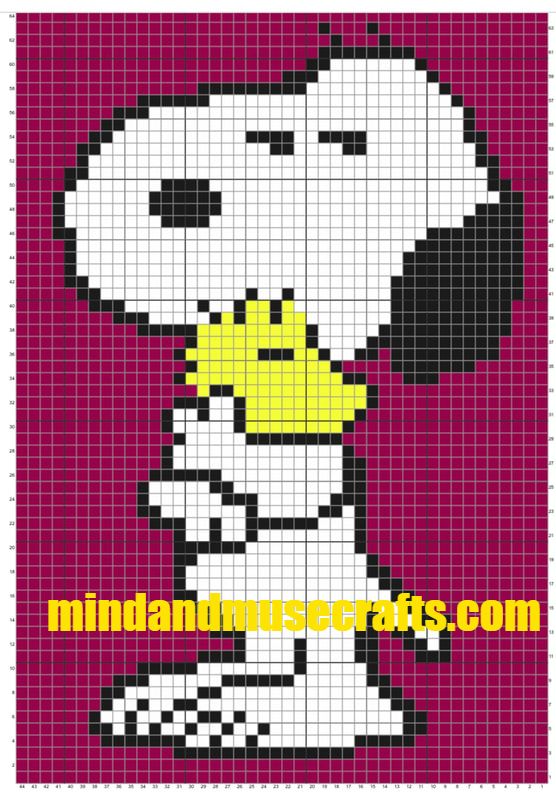
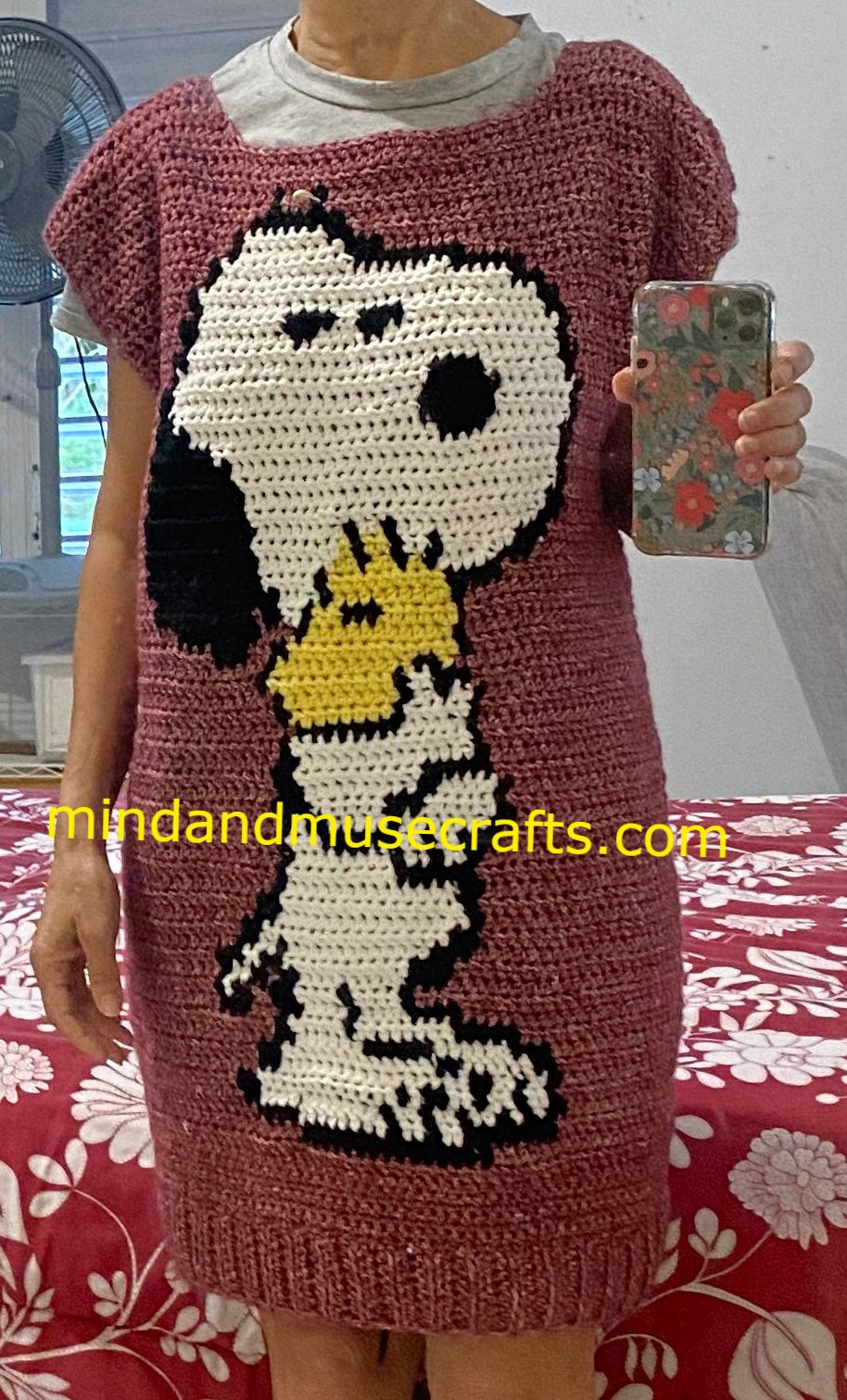
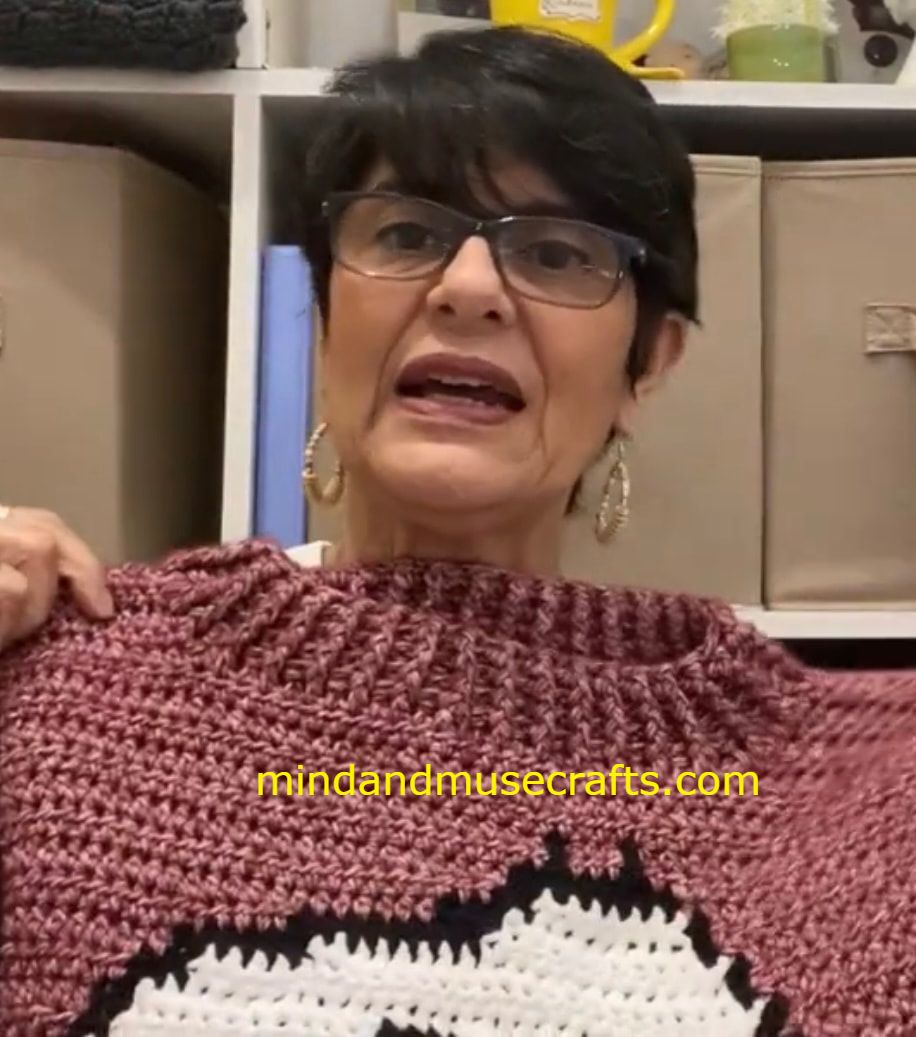
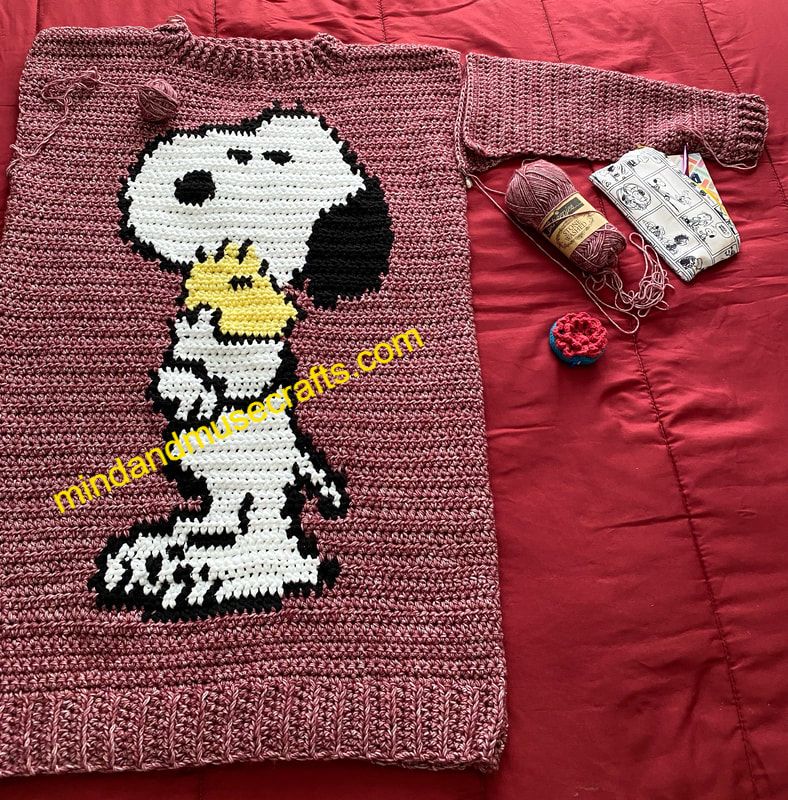
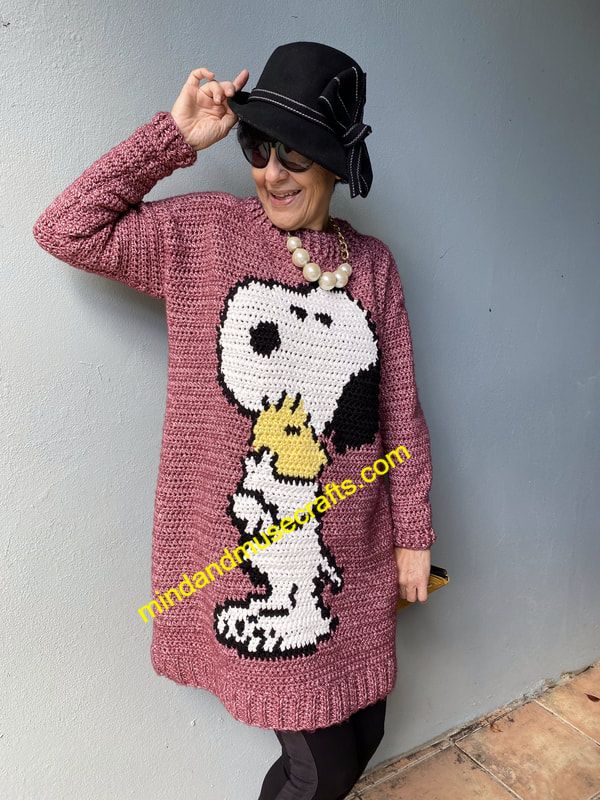
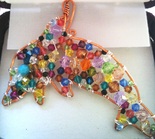
 RSS Feed
RSS Feed
